EEN l R – B reathing F is H C ultu met betrekking tot
Murrels en catfish staan bekend om hun waardering en goede marktvraag vanwege hun lage vetgehalte en weinig intramusculaire stekels. De luchtademende vissen zijn winterhard en in staat om atmosferische lucht in te ademen met hun bijbehorende ademhalingsorganen. Door de aanwezigheid van deze hulpademhalingsorganen kunnen deze vissen enkele uren buiten het water overleven. Deze hulpademhalingsorganen zijn ademhalingsbomen in Clarias , labyrintisch orgaan in Channa , luchtblaas naar binnen heteropneustes , branchial kamer in de bovenstaande vissen, enz. en zijn in staat om lucht op te slokken. Deze kunnen worden gekweekt in gebieden met weinig opgeloste zuurstof, zoals ondiepe vuile wateren, verlaten vijvers en moerassen. Vanwege hun vermogen om buiten het water te leven, hun cultuur omvat een laag risico en eenvoudig beheer.
In India, Andhra Pradesh, Assam, Utrecht, Madhya Pradesh, Tamilnadu, Karnataka, Maharastra, Bihar en Meghalaya ondersteunen de belangrijkste natuurlijke visserij op luchtademende vissen. Deze vissen zijn van nature vleesetend en passen zich uitstekend aan bijvoeding. Aangezien er niet veel energie wordt verspild door de ademhaling door de groeiende luchtademhalers van ondiep water, goede opbrengsten konden worden verwacht.
De kweekbare soorten luchtademende vissen zijn Fig. 9.1
C H een nn een s t R een het jij s – Grote of gestreepte zeekoet- of slangenkopvis
C hann een punctueel s – Gevlekte zeekoe
Channa marulius – Reuzenmurrel
Clarias batrachus – Magur
heteropneustes fossielen – Singhi
Anabas testudineus – Koi of klimbaars.
Uit deze Channa striatus heeft de hoogste vraag in de markten en vraagt ook een hogere prijs. Volgende beste zijn Clarias en heteropneustes . De cultuur van de bovengenoemde soorten is winstgevend.
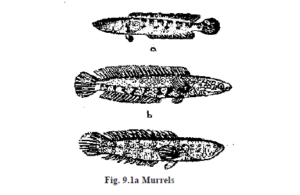
a) Channa marulius b) Channa straitus c) Channa punctatus
Cu ik toerab ik e Oppervlakte s
De kweek van luchtademende vissen heeft ondiepe wateren nodig met een diepte van 50 – 75 cm. Vijvers voor luchtademende viscultuur hoeven niet met chemicaliën te worden bemest. Luchtademende vissen kunnen ook worden gekweekt in kooien in stromend watersystemen zoals beekjes, kanalen en onhandelbare wateren zoals stuwmeren. De luchtademende viscultuur is evenzeer aanpasbaar in wateren die ongeschikt zijn voor conventioneel kweekbare karpers als in kweekvijvers voor karpers. Ondiepe vijvers zijn handig voor vissen, waarin de vis minder energie hoeft te besteden aan het reizen naar de oppervlakte om zuurstof uit de lucht op te nemen.
Zien NS collectio N
Het zaad van de murrel, magur en singhi worden verzameld uit de natuurlijke hulpbronnen, ondanks succes behaald in geïnduceerde fokkerij. Zelfs vandaag, zaad dat uit de natuur wordt verzameld, blijft de meest betrouwbare bron van materiaal voor opslag. Van Murrels is bekend dat ze in twee jaar volwassen zijn en dat ze het hele jaar door broeden. De jongen van 2-4 cm kunnen het hele jaar door worden verzameld en uit door regen gevoede sloten en ondiepe wateren met veel onkruid. Het is echter bekend dat piekpaaien net voor de moesson plaatsvindt.
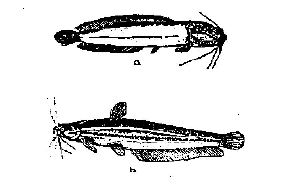
a) Clarias batrachus b) Heteropneustes fossilis
De jongen die uit de eieren komen, bewegen zich in scholen en het verzamelen in grote aantallen is altijd gemakkelijk. De fingerlings hebben misschien niet de neiging om in scholen te bewegen. De jongen van de reuzenzeekoorts zijn te herkennen aan hun donkergrijze lichaam en een laterale oranjegele band van het oog tot de staartvin. De jongen van de gestripte zeekoe hebben een helderrood lichaam met een roodachtige gouden band en een donkerzwarte band van het oog tot de staartvin. De gevlekte zeekoeten is te herkennen aan hun donkerbruine lichaam met een goudgele zijband en een middenruggele lijn op de rug.
In de murrelcultuur, het is beter om fingerlings op te slaan in plaats van de jongen. Kannibalisme wordt gevonden in murrel fry. De overlevingskans van jongen die door geïnduceerde kweek worden geproduceerd, zal slecht zijn en het is moeilijk om de spawn te behouden en ze te laten groeien tot het stadium van de jongen. De spawn eet niets gedurende twee dagen nadat ze uit eieren zijn gekomen. Vandaar, de jongen moeten worden getraind om aanvullend voer in aparte vijvers te accepteren. Het bijvoer bestaat uit gekookte eieren, poppen van zijderupsen, gehakte vis en wormen samen met gist en vitamine B.
Het wordt gedurende ongeveer 15 dagen gegeven met een snelheid van 20% van hun totale lichaamsgewicht. De jongen bereiken binnen een maand het fingerling-stadium van 4-6 cm lengte.
De katvissen broeden twee keer per jaar met het piekseizoen tijdens het regenseizoen. Magur-vingerlingen zijn te herkennen aan hun langere rugvin en leisteenkleur. Singhi-vingers hebben een korte rugvin en zijn roze van kleur. Koi-vingerlingen kunnen worden geïdentificeerd door de donkere vlek op de staartwortel en de groenachtige tint op het dorsale oppervlak van het lichaam. De maguren maken een gat van 25 cm diepte in de bund onder het wateroppervlak. De bevruchte eitjes hechten zich aan het gras en worden bewaakt door de mannetjes. 2, 000 – 15, 000 jongen kunnen uit elk gat worden verzameld met behulp van kleine fijnmazige handnetten en worden gekweekt in kinderdagverblijven tot ze het vingerige stadium bereiken met een lengte van ongeveer 5 cm.
Magur kan worden gekweekt in vijvers voor de productie van jongen. 1 x 1 m compartimenten van draadscherm zijn gemaakt aan de randen van de bund. In het midden van elk compartiment, er wordt een gat gegraven met een diameter van 30 cm en voorzien van enkele waterplanten. Na het vrijgeven van beide geslachten, ongeveer 5, 000 jongen kunnen binnen 10 dagen uit elk compartiment worden opgehaald. De mannetjes en vrouwtjes kunnen ook worden gekweekt in kleine aarden vijvers. Ze kunnen worden opgeslagen 20, 000 / vijver en gevoed met gefilterd zoöplankton of gehakte vismeel en arachideoliecake. De jongen kunnen 15 dagen worden gekweekt in kwekerijen.
Het hoogseizoen voor het verzamelen van singhizaden is de pre-winterperiode wanneer de padie wordt geoogst en de laaggelegen velden worden blootgesteld.
Zien NS tr een nspor t
De jongen of fingerlings van luchtademende vissen kunnen worden vervoerd zonder zuurstofverpakking. Polyethyleen vaten of ijzeren vaten worden gebruikt voor het transport van jongen of fingerlings. De drager moet voldoende ruimte hebben voor hun gebruikelijke oppervlak om atmosferische lucht in te ademen. De drager moet een kleine hoeveelheid wateronkruid bevatten zoals: Vallisneria, Hydrauliek , Myriophyllum en Ceratophyllum . Het onkruid kan helpen voorkomen dat de vis opspringt tijdens het transport. Als de afstand groter is, het is beter om ze te vervoeren in met zuurstof gevulde polyethyleen containers.
Pon NS ma N ageme N t
Kwekerijen zijn ongeveer 10 – 15 m2, met een waterkolom van 50 cm. Deze zijn gevuld met 0,2 – 1,5 miljoen jongen/ha. Voorafgaand aan de opslag, bemesting wordt gedaan met rauwe rundermest met een snelheid van 500 kg/ha alleen. De zeep-olie-emulsie voor het verdelgen van insecten wordt op het kweekwater aangebracht. Fry en fingerlings van magur en singhi verzameld uit natuurlijke hulpbronnen vereisen kwekerijbeheer, maar murrels moeten worden getraind in kweekvijvers voordat ze worden uitgezet. Na het beheer van de kwekerij worden de kuikens overgezet in uitzetvijvers.
Stoc k in G
Voor de kous worden vingerlingen van uniform formaat gekozen. De fingerlings worden gedesinfecteerd met 2% KMNO4-oplossing gedurende 5 minuten of gedompeld in 200 ppm formaline-oplossing gedurende 50 seconden voordat ze worden opgeslagen. Gewonde fingerlings worden gedurende 5 minuten behandeld met 0,3% acriflavine.
Deze vissen kunnen ontsnappen door te klimmen of te graven. Vandaar, de vijverdijken moeten stevig zijn met zware stam of hout, of omheind met bamboeriet of draadschermen tot een hoogte van ongeveer 50 cm.
Er kunnen meer fingerlings in hun kweeksysteem worden opgeslagen. 40, 000- 60, 000 systemen.
fingerlings/ha meerval kan worden uitgezet in monocultuur In polycultuursystemen 20, 000 – 30, 000 fingerlings/ha kat
vissen kunnen worden uitgezet. In monocultuursystemen, 15, 000 fingerlings/ha reuzenmurrels, 20, 000/ha in het geval van gestreepte zeekoe en 20, 000 – 30, 000 / ha in het geval van gevlekte zeekoe worden op voorraad. In polycultuursystemen, gestreepte en gevlekte zeekoeten kunnen worden opgeslagen met een snelheid van 20, 000 fingerlings / ha in de verhouding van 1:1.
Polycultuur van zeekoeten – karpers en meervallen – karpers is ook mogelijk met de juiste zorg en beheer. Het zaad van luchtademende vissen mag pas worden gevuld als de karpers zijn gegroeid tot minimaal 300 gram, zodat luchtademende vissen niet op de karpers kunnen jagen. Hiermee, niet alleen een extra inkomen kan worden verkregen door de opbrengst van luchtademende vissen, maar ook de groei van karpers kan worden bevorderd. De latere is mogelijk, als de afvalvissen die met karpers kunnen wedijveren om voedsel en ruimte, worden uitgeroeid door de groeiende luchtademhalers.
Voeren G
Om een overvloedige voedselvoorziening voor groeiende luchtademhalers te behouden, de kousvijver moet rijk zijn aan dierlijk voedsel, zoals kikkervisjes en afvalvissen. Als deze voedselbron niet voldoende is, kan tilapia ook worden gekweekt in zeekraal- en katvisvijvers. Gedroogde zeeafvalvissen worden ook gebruikt in de viscultuur en zijn zuiniger. Meervallen kunnen worden gevoerd met visafval of slachtafval of gedroogde poppen van zijderupsen gemengd met rijstzemelen en oliekoek in de verhouding 1 :1 :1 :1. Een mengsel van oliekoek, rijstzemelen en biogasslurry in de verhouding van 1 :1 :1 hebben singhi succesvol en goedkoop voer opgeleverd. Rijstzemelen en pluimveevoer in 3 :1 en biogasslurry en rijstzemelen in 1 :2 worden eveneens gegeven in een verhouding van 5 – 8% van het lichaamsgewicht.
Gedurende de acht maanden durende semi-intensieve kweek in stilstaande vijvers, het luchtademende meervalbestand kan tijdens de donkere uren van de dag dagelijks met de volgende snelheid worden gevoerd om een betere voerbenutting te verkrijgen (Tabel 9.1).
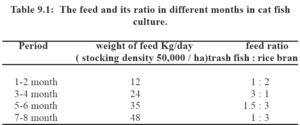
Het voer kan ofwel in kleine hoeveelheden vanuit de dijk in de vijver worden uitgestrooid of kan worden geserveerd in voermanden die dicht bij de oever zijn neergelaten, naast het uitstrooien van voer om ervoor te zorgen dat alle vissen in de vijver toegang hebben tot voer. Lichtvallen kunnen worden geïnstalleerd in zeekoetvijvers, waardoor de insecten door licht kunnen worden aangetrokken en door zeekoeten kunnen worden gebruikt als eiwitrijk voedsel.
Getrainde zeekoetvingers accepteren ook goedkoop gedroogde, in water gedrenkte zeeafvalvissen, die kunnen worden verstrekt volgens het volgende voedingsschema (Tabel 9.2). Ook slachtafval en poppen van zijderupsen als bron van dierlijk eiwit kunnen worden gebruikt.
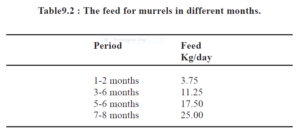
gr O wt H een N NS P R od jij ct l O N
Murrels en catfishes bereiken een verkoopbare grootte in respectievelijk een periode van maanden. Als de beheerpraktijken correct zijn, reuzen- en gestreepte zeekoeten kunnen een groei bereiken van 1 – 2 kg/jaar. en 0,75 kg/jr. respectievelijk, terwijl gevlekte zeekoeten tot 160 gr. over 8 maanden. Het is bekend dat katvissen langzaam groeien in vergelijking met zeekoeten. Magur en singhi groeien tot respectievelijk 0,2 kg en 0,1 kg. De conversieratio met aanbevolen voer is ongeveer 2 :1.
Murrels met voedervissen als aanvullend voer leveren ongeveer 4 ton/ha/jaar op. Magur met gedroogde trash fish en rijstzemelen aanvullend voer, geef de productie van 10 ton/ha/jr. Singhi geeft een opbrengst van 4,4 /ton/ha/jr. Polycultuur van zeekoeten en koi, gevoed met rijstzemelen, mosterdoliecake en afvalvis, een productie geven van 11,8 ton/ha/jr, terwijl magsur en singhi gevoed met rijstzemelen en afvalvis een opbrengst geven van 5 ton/ha/jaar. Gemengde cultuur van 3 soorten zeekoeten produceert 4 ton/ha/jaar wanneer ze worden gevoerd met geweekte en gedroogde zeeafvalvissen en verse poppen van zijderupsen als voedsel. In de intensieve teelt kan magur 7 ton/ha/5 maanden geven.
C ul t ur e met wie l t H ca R P s
Met een bezettingsdichtheid van 5000/ha Indiase en Chinese karpers en 1000 magur fingerlings produceren 2518 kg/ha/jr karpers en 3711 kg/ha/jr magur. Dit geeft aan dat de polycultuur winstgevender is, en het is nuttig om magur op te nemen in het karperkweeksysteem. Met een bezettingsdichtheid van 20, 000/ha magur samen met overgebleven karpers (na gedeeltelijke oogst van karpers) wordt een productie van 3,96 ton/ha/jr verkregen met een verhouding van 50 :30 :17 :3 rijstzemelen, vismaaltijd, arachideoliecake en mineralen als aanvullend diervoeder. De magur wordt geschikt bevonden voor samengestelde viskweek van karpers in plaats van gewone karper. Magur, koi en singhi zijn ook geschikt om te kweken, samen met een hoog geprijsde karper makhana, Euryale ferox .
Haro v estin G
Het zomerseizoen is ideaal voor het oogsten van lucht - ademende vissen uit vijvers. De vijver wordt drooggelegd en de vissen worden geoogst met behulp van schepnetten of handnetten. Vanwege hun grote vraag en marktprijs, de cultuur van deze lucht-ademhalers zorgen voor winstgevende inkomsten voor viskwekers met eenvoudige beheerstechnieken.
C een G e sekte jij R e
De luchtontluchters kunnen ook in kooien worden gekweekt. De kooien worden voorbereid met matten van gespleten bamboe in stromend water. Het optimale kooigebied is 2m x 1m x 1m groot. De bovenkant van de kooi is voor de helft bedekt met mat en het onbedekte deel is bedekt met een net om het voeren te vergemakkelijken en het ontsnappen van vissen te voorkomen. Kunststof gaas wordt ook gebruikt om kooien voor te bereiden.
Magur worden gevuld met een snelheid van 200/kooi, gevoed met 10% van het lichaamsgewicht op gedroogde afvalvissen, oliecake en rijstzemelen en produceren 10 – 12 Kg/m3/jr. Singhi produceert 12-20 kg/m3/jr met een bezettingsdichtheid van 100 – 150/kooi en 10 % van het lichaamsgewicht voer van zijderupspoppen, rijstzemelen en mosterdoliecake. Koi produceren 4,2 kg/m3/jr met een bezettingsgraad van 50 – 100 /kooi met hetzelfde voer als singhi. Gevlekte zeekoet produceert 4 kg/m3/jr met afvalvis en rijstzemelen. Vandaar, de luchtademende viscultuur is zeer winstgevend, evenals een rijke bron van dierlijke eiwitten. Deze vis wordt beschouwd als een delicatesse, en heeft een zeer hoge prijs en een continue vraag op de markten.
t R OU t CU L t UR E
Forel wordt gekweekt als voedselvis of sportvis, worden uitgezet in natuurlijke wateren voor sportvissers. Forel is populair omdat het een aantrekkelijke, actieve vechtvis en levert vlees van zeer hoge kwaliteit. Over de hele wereld zijn forellen uitgezet en in water gekweekt. Forellen worden al heel lang op commerciële schaal gekweekt in de VS. De cultuur in Europa gaat 400 jaar terug. Het is een koudwatervis. Het leeft voornamelijk in rivieren, stromen, beken, meren en vijvers. In India wordt het gevonden in Kasjmir, Himachal Pradesh, Uttar Pradesh, Nilgiris, Kodai-heuvels en het hoge bereik van Munnar.
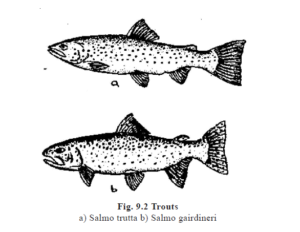
Er worden veel soorten forel gekweekt, maar de drie meest voorkomende zijn de regenboogforel, Slamo gardneri of Oncorynchus mijn kus, de Europese beekforel, S.trutta (Fig. 9.2) en de beekforel, Salvelinus fontinalis. Forellen hebben een gestroomlijnd lichaam, smalle kieuwopeningen en verminderde kieuwen. Forellen zijn aangepast aan sterk zuurstofrijk water en vriespunttemperaturen. Forellen hebben een grote voortbewegingskracht met zich vastklampende en gravende gewoonten. Mond is aangepast met raspende lippen voor het verzamelen van voedsel uit kiezelstenen, rotsen, enzovoort..
S P aw N in G
Het paaiseizoen van S.gairdneri is van september tot februari, S.trutta is van oktober tot december en S.fontinalis is van oktober tot januari. Forellen geven de voorkeur aan grindachtig substraat om hun eieren te beschermen en de eieren plakken aan grind en puin. Forellen bouwen nesten en paaien in stroombeddingen. Culturisten laten kunstmatige bemesting toe, omdat beekbodembemesting een lagere uitkomst geeft dan kunstmatige bemesting. Manipulatie van de fotoperiode en watertemperatuur kan worden gebruikt om gonadale rijping te induceren, zodat het hele jaar door jonge vissen worden gegenereerd. Forellen worden gevangen op of bijna volwassen als ze stroomopwaarts zwemmen en volwassen worden in vijvers. De broedvissen worden in kleine vijvers met stromend water geplaatst en zijn vaak bedekt met netten om te voorkomen dat ze springen. De milt van een enkele man kan worden gebruikt om twee vrouwen te bevruchten, zodat meer vrouwtjes worden gevuld met weinig mannetjes.
Forellen vertonen seksueel dimorfisme. Mannetjes worden feller gekleurd en de onderkaak ontwikkelt tijdens het broedseizoen een haaksnavel. Vrouwtjes ontwikkelen uitgebreide buiken en de genitale papil wordt groter en roodachtig. Als ze volgroeid zijn, milt of eieren komen naar buiten met weinig druk op de buikopening. Als de forel rijp is, de vrouwelijke vissen worden gestript en de eieren worden verzameld in een zwart gekleurd emaille of plastic container waaraan de milt van het mannetje wordt toegevoegd en grondig gemengd met een ganzenveer voor bevruchting. Na het mengen wordt water toegevoegd en het water zorgt ervoor dat de eieren opzwellen. Er mag geen water worden toegevoegd voor het mengen, omdat de beweeglijkheid van het sperma sterk wordt verminderd in de aanwezigheid van water. Om een betere overlevingskans te garanderen, de eieren kunnen worden verzameld in een kleine hoeveelheid zoutoplossing (10 liter zoet water +90 gr keukenzout + 2 gr kaliumchloride + 3 gr calciumchloride). De bevruchte eitjes krijgen een groene tint en staan bekend als ‘groen’, die vervolgens naar broederijen worden overgebracht. Voor het overbrengen de vreemde deeltjes en dode eieren verwijderen.
t ra NS P O R t Bij l O N O F t route e gg s
De bevruchte en uitgeharde eieren (24 uur gehard) van forel worden vervoerd in kartonnen dozen van 20 x 30 x 20 cm. De binnenkant van de kartonnen doos is bekleed met piepschuim. Er zijn twee vochtige sponzen of wattenschijfjes aangebracht, een aan de onderkant en de andere aan de bovenkant. Poreuze polyethyleen zakken met ongeveer 4, 000 eieren worden tussen de vochtige sponzen en wattenschijfjes geplaatst. Een polyethyleen zak met IKg gebroken ijs wordt bewaard om de temperatuur laag te houden, boven het bovenste kussen. Deze kartonnen dozen worden naar verschillende plaatsen vervoerd.
Hatcher ja tec H nique s
De forelleneieren worden uitgebroed door ze in betonnen bakken te houden met platte en horizontaal geplaatste bakken, broedmachines of pot. Broederijen moeten worden voorzien van circulerend gefilterd en slibvrij zoet water. Vroeger werden manden gebruikt om te broeden. Incubators met verticale stroom zijn de meest voorkomende. Het heeft veel roestvrij staal, van glasvezel, aluminium, of hout, of PVC, of plastic bakjes, boven elkaar gerangschikt. De bodem van de trays zijn voorzien van geperforeerde zinken platen, glazen roosters of gaasdoek om de doorgang van water door de verschillende bakken te verzekeren. Het formaat kan variëren van 180 X 30 X 10 cm tot 500 X 100 X 50 cm. Elke bak heeft een bovenste eiermand en een onderste geperforeerd compartiment waarop de mand rust. De eieren worden in de mand geplaatst voor incubatie. Het water wordt zo in de bak gebracht dat het door de mand met de eieren omhoog stroomt, dan naar beneden naar de lade eronder en omhoog door die mand en zo verder door de broedmachine. Deze opwaartse stroom van water door de eieren zorgt voor meer beluchting en vergemakkelijkt de verwijdering van metabolieten.
Broedpotten worden ook gebruikt voor het uitbroeden van forelleneieren. Het bestaat uit een gegalvaniseerd scherm van 0,5 mm maas met grindbed aan de onderkant, net boven de inlaat. Dit grindbed is handig als filter om de ongewenste deeltjes te verwijderen. De eieren worden boven het filter geplaatst om uit te komen. Water stroomde door de inlaat, opwelt door het filter en de eieren en loopt weg via de uitlaat. Na het uitkomen, de jongen worden enige tijd in de potten gehouden.
De eieren zijn zeer gevoelig tijdens de broedperiode. Pas bevruchte eieren kunnen worden gedood als ze direct worden blootgesteld aan zonlicht. Tijdens incubatie, water moet bewegen en een hoog zuurstofgehalte hebben. Incubatie vindt normaal gesproken plaats in water met een temperatuur van 8° -12°c. De jongen kunnen in de bakken worden gehouden totdat ze actief worden en kunnen beginnen met eten. Ze kunnen worden uitgezet voor opslag in natuurlijke wateren.
Cu ik tu met betrekking tot O F t rou t s
De jongen worden opgekweekt in kleine opfoktroggen voordat ze hun dooierzak volledig hebben opgenomen, en introduceren om te leven op kunstmatige voeding. Daarna worden ze overgebracht naar kweekvijvers om ze op te kweken tot een gevorderd frituurstadium. De kweekvijvers kunnen van beton of stenen zijn met een afmeting van 2,5 x 1 x 0,75 m tot 9 x 1 x 0,75 m. De waterstroom kan worden gehandhaafd op 100 l/min. in de kweekvijver.
De geavanceerde jongen worden tot volwassenen gekweekt in kweekvijvers en loopbanen. Kweekvijver is een natuurlijke watermassa, en een toevoerkanaal is slechts een visvijver met stromend water. De grootte van de loopbanen moet variëren van 20 - 100 m2 met een diepte van 1,5 m. Aan weerszijden van de beek of rivier is een reeks toevoerkanalen aangelegd. Elke toevoerleiding krijgt water uit de beek en water gaat uit de toevoerleiding via de uitlaat die zich aan de andere kant bevindt. Bij in- en uitlaten worden zinkplaatschermen gebruikt. De waterstroom wordt gehandhaafd op 50 liter/sec, in de vijvers van de rivier. In de VS worden ronde en ovale vijvers gebruikt. De bezettingsgraad kan worden beperkt tot 5-10 kg/m2. Hoge productie van 200 Kg/mis ook mogelijk in loopbanen, als de leiding goed is.
Kooicultuur van forel is ook gebruikelijk. In een experiment, fingerlings werden met 1,4 kg/m2 in kooien gehouden en 3 . gevoerd % van hun lichaamsgewicht per dag. Deze forellen groeiden tot 27-88 gr. in twee maanden. Het voer dat aan forellen wordt gegeven, omvat rundermilt, hart en longen en zee- of zoetwatervissen. Er zijn veel commerciële forelvoeders op de markt verkrijgbaar. Forellen worden 3 tot 4 keer per dag gevoerd. Er zijn verschillende manieren om forellen voer te geven. Het voer wordt ofwel op het wateroppervlak gesproeid, of het voer kan in een zak of in een bak in de hoek van de vijver worden bewaard. Het wordt gebruikt voor de vraagfeeders, waarbij wanneer een forel tegen de trekker botst, het voer in het water wordt losgelaten, of automatische feeders kunnen ook worden gebruikt. Potten en trommels worden ook gebruikt voor het kweken van forel.
Se met wie ag e – Fe NS F l s H Cu ik tu met betrekking tot
Riolering is een troebel, vuile en geurige vloeistof uit onze toiletten en keukens van onze huizen. Het bevat mineralen en organische voedingsstoffen in opgeloste toestand of gedispergeerd in vaste toestand. Door de verstedelijking is de afvoer van afvalwater een wereldwijd probleem geworden. Het is een effect van demophora, dat wil zeggen een onverminderde groei van de menselijke bevolking. In recente jaren, rioolwater is een belangrijke vervuiler van de binnenwateren geworden, vooral rivieren. Het is een bron van veel epidemieën. Het is verantwoordelijk voor een ernstige bedreiging voor bodem- en waterecosystemen. De aanpak van afvalwaterverwijdering moet het gebruik van dit residu zijn met het concept van hergebruik of recycling via een ecologisch evenwichtig systeem waarbij voornamelijk aquacultuur wordt gebruikt. Het nut van afvalwater om de vruchtbaarheid van zoetwatervijvers te verbeteren is in veel landen van de wereld al lang bekend.
De hoeveelheid geproduceerd afvalwater is India in 3,6 mm3/d (miljoen kubieke meter per dag) of 800 mg/d (miljoen gallons per dag). Ongeveer 30% (1,9 mm3/d) wordt geproduceerd in stedelijke centra. In deze centra wordt slechts 1,3 mm3/d (20,4% van het eendaagse totaal van India) behandeld. Bijna 80% van het eendaagse totaal van het land moet nog worden behandeld en gebruikt. De hoeveelheid mest die wordt verkregen uit de eendagsproductie van afvalwater in India is ongeveer 0,126 m.ton. Dit is gelijk aan 46 m.ton/jaar. De mest van eendagsriolering is voldoende om 0,1 m.hectare jaarlijkse visvangst te verbouwen. Riolering is ook nuttig om vissen te kweken. In India zijn er slechts 130 viskwekerijen die met rioolwater worden gevoed, in een gebied van 12, 000 hectare. De met afvalwater gevoede visserijen van Vidyadhari in de buurt van Calcutta is een voorbeeld, waar vissers ten volle hebben geprofiteerd van de rioleringssystemen van Calcutta. Hier is de visopbrengst ongeveer 1, 258 kg/ha. De hoge mestcapaciteit wordt gecombineerd met de potentie om als extra waterbron voor de viscultuur te dienen en de visproductie te verbeteren.
Co m posi t io N O F naaien G e
De samenstelling van afvalwater verschilt van plaats tot plaats en afhankelijk van het seizoen. Water is een belangrijk bestanddeel van rioolwater (99%) en de vaste suspensie in rioolwater bedraagt slechts 1%. Het afvalwater van Indiase steden bevat gemiddeld 52 ppm stikstof, 16 ppm phosphorus, 45 ppm potassium and 350 ppm biodegradable organic matter. The organic carbon component is 25-40 ppm, the ratio of carbon and nitrogen being 1:3. Salts of several heavy metals such as Zn, Ni, Cr, Pb, etc. are also found above the permissible levels in sewage. The organic refuses in the sewage have proteins, carbohydrates and fats in varied proportions depending on the nutritional status and food habits of the population. Among carbohydrates, readily degradable starch, sugar and cellulose are detected.
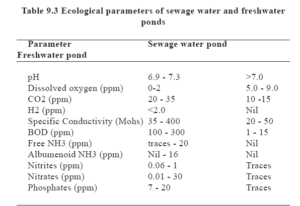
Some ecological features of different waters are mentioned in Table 9.3. Sewage water has high BOD (Biological Oxygen Demand) and Oxygen Consumption (OC) values. Dissolved oxygen becomes depleted in sewage water due to high oxygen demand and low photosynthetic rate. Photosynthesis is low because of poor illumination as the suspended solids in sewage water obstruct sunlight. On an average, strong, medium and weak sewage consist of 1200 ppm, 720 ppm and 350 ppm of total solids respectively, out of which 850 ppm, 500 ppm and 250 ppm occurs in a dissolved state and 350 ppm, 220 ppm and 100 ppm is found in suspended form. Dissolved salts being very high in sewage water, manifest high specific conductivity. Production of acids in high amounts render the water acidic, making the medium unfit for supporting life (Fig. 9.3). Acidity of water below pH4 is known to kill the flora and fauna.
Sewage enriches water with organic matter that begins to decompose aerobically thereby depleting dissolved oxygen and leading to anoxic condition. Anoxia causes non-mortality of animals, adding organic matter further to the already rich organic content. In the absence of dissolved oxygen the organic matter undergoes anaerobic decomposition as a result of which obnoxious gasses like H2S, CH3 and CO are produced. These gasses besides being toxic, react with water to form acids.
Immediate effect of sewage on the biota is eutrophication. Sewage water stimulates rapid growth of phytoplankton leading to an algal bloom followed by rapid increase in zooplankton. For utilizing sewage in aquaculture, the properties such as the concentration of dissolved and suspended solids, organic carbon, nitrogen and BOD are essential.
Micro B iolog l ca ik C harac t arist l C s
Harmless and even useful non-pathogenic bacteria are present in much greater numbers in domestic sewage as compared to pathogenic bacteria comprising mostly the intestinal microorganisms found in the community producing the waste. Usual load of coliform bacteria in raw sewage ranges between 108 and 109 MPN/100ml.
Si t e s e lectuur l O N een N NS C onst R ucti O N O F se met wie leeftijd- F e NS fis H ver m
Fish farm in the vicinity of an urbanized area has the scope to receive domestic sewage for the recycling of nutrients. Any area adjacent to a municipal sewage treatment plant is ideal for the location of a sewage-fed fish farm. The fish farm site should be at a lower level than the treatment plant so that the sewage can easily enter into the pond through a pipeline by gravity. The fish farm should have facilities of draining out water from the ponds.
The plan of the fish farm depends upon the source of the sewage, system of culture and topography of the land. Nearly 75% of the total area is converted into ponds leaving the rest for dykes and other purposes. Rectangular fish ponds of 0.3 to 1 ha are constructed with a slope of 1:3 for the embankment and maximum depth of 1.5m. Each pond should have proper drainage facilities.
The effluent is collected in a sump at the farm, from where the effluent is taken into the ponds through the distributing system. Additional arrangement is made to connect the pipelines with freshwater supply for emergency dilution.
S e kwispelen e tr e atme N t
Sewage treatment is necessary to kill the harmful microbes, prevent anoxia, raise the pH to an alkaline level, increase photosynthesis, reduce organic content, etc. The treatment has to be inexpensive and one which induces in sewage water the conditions prevailing in a natural freshwater pond. Sewage is treated in following three ways – mechanical treatment, chemical treatment and biological treatment.
Mecha een nica ik t reatment:
Solids and organic matter are removed to a large extent by mechanical treatment, which involves flowing, dilution and sedimentation. Usually screening and straining of sewage it is done to remove the waste solids. The liquid and semisolid wastes are then
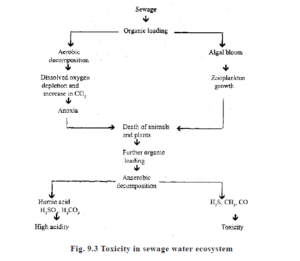
subjected to treatment for the removal of colloidal and semisolid suspension by dilution, H2S, CO2, CO, NH3, CH3 concentrations are brought below the normal levels. Thus, through primary treatment the supernatent effluent is separated from the sludge.
C H emic een ik t reatment:
In chemical treatment, several dissolved substances, harmful germs and aggressive odours are eliminated. Inexpensive precipitants,
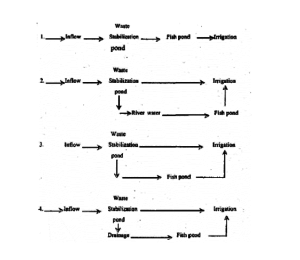
coagulants, chelating substances, disinfectants, deodorising agents, etc. are used in this treatment. The sewage water is also treated with chlorine, bleaching powder and copper sulphate. It is also known as secondary treatment.
Biol O gica ik t R e atment :
In biological treatment of sewage care is taken to promote bacterial growth. Bacterial action promotes oxidation of organic matter. The end products nitrogen oxides, bring about rapid growth of algae, particularly the blue green Microcystis. This arrests anoxia of water by raising the dissolved oxygen, lowering the CO2 content and by increasing the pH from acidic to alkaline levels. The algal bloom reduces the concentration of dissolved salts in the sewage water.
Po N NS ma N ag e Heren t
F e rtil l zati O N
Fertilization of sewage-fed pond is done in two phases, pre-stocking and post-stocking fertilization. In dewatered and sun dried ponds, primary treated sewage effluent is taken up to a depth of 60 – 90 cm during premonsoon months (April – May). The effluent is then diluted with rain water or freshwater till the pond BOD reduces to 50 ppm. Periodic fertilization with sewage effluent is carried out after two months of stocking to maintain nutrient status and productivity of the pond at a desired level. The quantity of sewage effluent to be allowed into a pond solely depends on its quality determined on the basis of BOD values.
Limin G
Application of lime in sewage-fed ponds is most essential. It is a useful promotor of fertility in ponds and act as a disinfectant against harmful microorganisms. Prestocking liming is recommended at a rate of 200 – 400 Kg/ha as initial dosage. Subsequent liming of 150 – 200 Kg/ha on standing crop is necessary throughout the year during sewage intake and during winter months, when parasitic infection is more.
Stoc k in G
The cultivable species of freshwater fish such as Indian major carps and exotic carps can be grown in sewage-fed waters. Considering the high carrying capacity and high productivity of sewage-fed ponds with respect to plankton and benthic fish food concentration, fish are usually stocked at a reasonably higher density. The stocking rate recommended 10, 000 – 15, 000 /ha of carp fingerlings of about 10 gr. each and it is preferred to stock more of omnivorous scavengers and bottom feeders to maintain fish pond hygiene for higher yield. The ratio of carps for better output is rohu 2.5 :catla 1:mrigal 2.5 :common carp 2 :silver carp 2. Omnivores and bottom feeders directly consume the organic detritus of sewage-fed ponds, and thereby directly helping in keeping the pond aerobic. The stocking rate of fish is kept on a higher side considering the profuse growth of algae which will otherwise grow, decay, putrify and finally deplete the oxygen concentration of fish pond.
E C ologica ik C onsideratio N s een NS een lga ik vervolg R O ik
Maintenance of aerobic conditions of the sewage-fed pond is highly essential and as such early morning dissolved oxygen level should not deplete below 2 ppm for carps. The BOD should be below 30 ppm for better survival of fishes. CO2 concentration should not be allowed to increase beyond 20 ppm to keep the toxicity level within tolerance limit for fish and to control algal blooms. Liming helps in regulating CO2. Heavy metal pollution, indien van toepassing, can be controlled by introducing water hyacinth at the pond margins and barricading them with bamboo poles to prevent spreading of the weed throughout the water surface of the pond.
Algal control is a must to maintain proper dissolved oxygen. It should be more than 2ppm and optimal 5 – 6 ppm in a sewage-fed pond. The presence of silver carp regulate the algae in the culture system. When biological control of algal bloom is not possible, application of simazin at rate of 0.5 – 1 ppm is recommended.
tegen t ro ik O F een Q uat l C inse C t
Aquatic insects are found in sewage-fed ponds, especially more during winter months. The insects of the pond mainly comprises hemiptera, coleoptera, odonata, zygoptera and trichoptera. Dipteran insects dominate, especially the larval stages of Chironomids associated with annelid worms of tubificidae.
Other insect larvae of the sewage-fed ecosystem belong to tubanidae, anthomyiodae, tetanocoridae, etc. The predacious hemiptera, coleoptera and a few odonata, zygoptera are needed to be controlled. An emulsion of soap and vegetable oil at a rate of 4 Kg/ha and in the ratio of 1:3 is applied to control these insects.
H arvestin G een NS yi e ik NS
After 5 – 6 months culture, when the biomass grows to an optimal level, the stocking density is thinned out through periodical and partial harvesting. The water depth of the pond is reduced by dewatering for final harvest when the fishes are removed by repeated drag netting.
In a mixed culture of five carp species in sewage-fed ponds, the yield rate varies from 5.4 – 8.6 t/ha/yr with an average production of 7 tonnes/ha/yr. The fishes are around 500 gr. to 1000 gr. during culture operations.
The recurring expenditure on sewage-fed fish culture is meagre compared to that of fresh-water fish culture. This culture is lucrative and a fish farmer can obtain an income, on an average of more than Rs. 40, 000 /ha/yr. If murrels are cultured in oxidation ponds and the excess sewage is utilised for the cultivation of crops, the revenue could be further augmented.
Full utilization of sewage has manifold benefits. Outbreak of epidemics can be prevented. Biogas from sewage can be used as fuel to ease the pressure on LPG, electricity and fuel wood. Slurry from biogas plants can be used as a manure. Water reclaimed from sewage can be recycled for irrigation and pisciculture. Daarnaast, scientific handling of sewage generates employment opportunities to educate youths. More than all these water bodies, rivers, particularly can be saved from sewage pollution by proper management.
Utilisat l O N O F Bioga s Slurr ja NS R fi s H cultus met betrekking tot
In our country, especially in rural areas, mere has been a tremendous growth of biogas plants as a source of non-conventional energy. Biogas is also called as gober gas. The biogas plant is a device for conversion of fermentable organic matter, especially cattle dung into combustible gas and fully matured organic manure or slurry by anaerobic fermentation. The nutrients of the generated slurry can be harvested for production of feed and food and replace conventional inorganic fertilizers. Due to lack of knowledge and communication to farmers, most of the generated slurry is not used properly. The biogas plant can also digest night soil, poultry and piggery droppings, weeds and other fermentable materials along with cattle dung. Biogas slurry consists of 1.52 mg/lit nitrogen, 0.82 mg/lit of phosphorus and 0.83 mg/lit of potash. Biogas slurry is rich in humus and contains nutrients mostly in the available form. The oxygen demand for its decomposition is much less than for raw cattle dung or any other organic manure. Due to the high nutrients value of biogas slurry, it can be used as a fertilizer in fish culture ponds. Slurry application improves the soil structure. It enhances zooplankton production in water.
Gober gas plant is a composite unit of a digester and gas holder. Gas holder floats on the top of digestor, wherein gas is collected. In the plant, the whole system is based on continuous operation. The organic manure to be fermented is fed in semi-fluid form at the one end and the fermented spent slurry is extracted at the other end periodically with disturbing the whole system. Slurry is odourless, free from flies and other sources of infection.
In a preliminary experiment, the slurry from plant is drained into a fish pond of 0.15 ha area, which is stocked withrohu, catla, mrigal, common carp, silver carp and grass carp at a density of 7, 500 fishes/ha, resulted in production of 5080 kg/ha/11 months (762 kg/ha/0.15 ha/ 11 months).
This experiment indicates that the high production potentiality of the pond using only biogas slurry as fertilizer. In Madurai Kamaraj University, the experiments conducted with Oreochromis mossambica by using only biogas slurry as fertilizer and found the enhanced production. They indicated that males grow larger than females. They got the production of 2.4 tonnes/ha/125 days with a stocking density of 30, 000 juveniles/ha and initial size of O.Sgm. They also got 4.4 tonnes/ ha/125 days with a stocking density of 60, 000 juveniles/ha and initial size of 0.5 gm.
In a polyculture experiment with Indian major carps at ratio of 4 rohu:3 catla :3 mrigal at a density of 5000/ha by using only biogas slurry (0.15% concentration every three days) as feed and fertilizer resulted 5500 kg/ha/yr. The fishes grow well with only slurry, without any supplementary food and other fertilizers, this reduces the cost of feed and fertilizer. But there is little chance of microbial attack, it can be controlled with good management. In an experiment at ANGRAU with biogas slurry in different dosages – 5000, 10, 000 and 15, 000 kg/ ha/yr applied in different fish ponds 1/3 of the slum’ was applied initially and the remaining slurry was applied in equal fortnightly instalments. Catla, rohu, mrigal, common carp, silver carp and grass carp were stocked at a ratio of 2:2:1:1:2:2 at the rate of 5000 kg/ha. The production was obtained was 1956. 2096, and 2052 kg/ha/yr in 5000, 10, 000 and 15, 000 kg/ha/yr biogas slurry treated ponds without any supplementary feed, or organic and inorganic fertilizers. The fish production obtained was 5470, 7230 and 6050 kg/ha/yr in the above three slurry treated ponds with supplementary feed, but without organic and inorganic fertilizers. Supplementary feed was given in the form of rice bran and groundnut oil cake in the ratio of 2:1 at the rate of 5% body weight of fishes.
The experiments indicate that high production offish in biogas slurry treated ponds and at the same time the expenditure is lesser than normal culture systems because organic and inorganic fertilizers and supplementary feeds are not used. By using the waste of biogas plant in the form of slurry, profitable fish production can be obtained. Fish produced through recycling of organic manure is more healthy and has less fat accumulation. The recycling system, echter, requires effective management. One of the problems is the difficulty in balancing the expertise needed in fish animal husbandry. Over concentration on one system may be detrimental to the other. The monitoring of dissolved oxygen level in pond water is absolutely essential when the integrated systems are adopted. Excessive manuring causes water pollution. It rapidly decreases oxygen level in the water, produces toxic gases like ammonia often leading to fish kills. Application of manure should be regulated according to the dissolved oxygen level which is very essential for the rapid growth of fishes. No serious health hazards due to slurry was noticed, though animal excreta is a potential source of infection. Bovendien, fermentation of the manure in a biogas plant kills and destroys the eggs of parasites.
C ag e een NS P e N Cul t jij met betrekking tot
Kooi cultuur
Fish culture in ponds is the primary method of freshwater and brackish water fish culture. Echter, there are other methods of fish culture used in places where pond culture is not possible. Other methods of fish culture are those carried out in dams and reservoirs, kooien, pens and rice fields. Due to exponential growth in population and the great pressure on land for habitation and agriculture, the large water resources such as tanks, meren, reservoirs and canals, which have been not exploited so far can be used for augmenting fish production. Due to the large water bodies, the management has complex problems. The best thing seems to be captive, regulated culture of suitable fishes in impoundments installed in them.
A practical approach to increase the aquaculture production could be takeup as fish husbandry in cages, pens and other enclosures in large water bodies like tanks, swamps, meren, reservoirs and canals along with open ranching, without prejudice to their other use. By virtue of the short gestation period, these unconventional systems yield quick results with minimum conflict of interaction on land demand with agriculture and other animal husbandry practices. Enclosure aquaculture can play a significant complementary role in augmenting yields from our capture fishery resources, especially those having large predatory fish population.
Cages and pens could be utilized as nurseries for raising fish seed and for the grow-out of table fish. They dispense with the need for land based nursery forms cutting down on the cost of seed production. Investment on long distance transport of fingerlings for stocking reservoirs and handling mortality can be avoided by insitu rearing of fry in cages and pen installed in them. One of the impoundment cultures is in cages. Many countries are practicing cage culture of fishes and prawns successfully. Cage culture has also been started in India only recently.
EEN dv een ntag e s O F cag e C ultu R e
The advantages of cage culture are
Loca t io N O F kooi s
The ideal location for cages is weed-free shallow waters. Flowing water is best for cage culture. The site should have adequate circulation of water. The wind and wave action should be moderate. The water should be free from pollution and weeds. The area should be easily accessible. Cage culture can also be practiced in areas like swamps where there is water not being used for any other purpose. Seed should be available in the vicinity. A ready market for fish should be available near the site. Flowing waters with a slow current of 1 – 9 m/minute’lare considered ideal for cages. The cages should be a little away from the shores to prevent the poaching and crab menace.
t ja pe s O F C een ge s
Cages can be circular, cubic and basket like and the shape has little effect on yield rate. Cages may be floating at the surface, just submerged or made to sit on the bottom. Floating cages may be the most appropriate for Indian conditions and the experiments conducted in our country for seed rearing, grow out, nutrition and biomonitoring have been in such enclosures. The size of the cage depends on the type of culture operation and the support facilities available. Large cages are difficult to handle. Although the cost of small cages is higher, handling is easy with low risk of losses. The nursery cages are generally of the floating type, while the ground cages may be floating or immersed depending on the species cultured.
C Aan s waar C ti O N O F ca G e s
The type of material used for cages (Fig 9.4) will depend on the type of culture whether they are used for fry or table fish rearing. Bamboo interspred with wooden planks for cages is commonly used in Indonesia, Vietnam, Thailand and Kampuchia. Thick polythene fibers are used for cages in Japan. Metallic grills are used in—LISA. Aluminum frame and nylon webbing is used for fabrication of cages in USSR and West Germany. In our country, fairly fine mesh nylon netting are used. The cage material are used mainly depending on their cost and availability.
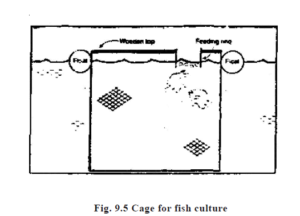
Small cages with mats of locally available plant materials such as palm leaves. Cyperus stang, Phragmites stem and split bamboo are used in India. These cages are of 1 – 2 m2 area. Split bamboos are joined with the help of coir rope or nylon twine. The cages are installed in the water body with bamboo supports at the four comers and the bottom. Materials other than bamboo mats are decayed by the third month and collapsed within a year. Split bamboo cages remain for over a year. Circular cages with thick bamboo stipes tied with nylon twine the durability of over 3 years.
Cages made up of monofilament woven material of 1 – 3 mm mesh size and 0.3 – 1 mm thickness are light and easy to handle, but remain for 6 to 12 months. The exposed part become brittle and gives way. Knotless nylon webbing of 3 – 6 mm mesh size and knotted nylon webbing of 7 -15 mm mesh have been found to be most durable. Cages made of water – proof surface painted light conduit pipe frames with a 10 m2 area are light in weight and have long durability. A battery of cages is enclosed with a bamboo catwalk and the whole structure floated by sealed empty barrels of 200 1. capacity.
The circular cages with conduit pipe structures which can be easily assembled have been designed with nylon webbing in different dimensions. These cages are floated freely on the water surface with the help of 3 – 4 sealed HDPP jerry cans. These arc extremely useful for cage culture. Due to their circular is shape the wave action in minimum. These can be moved from place to place with least water resistance. Due »their circular shape, the rearing space is maximum in side. The aeration and water circulation is better in these cages. Fishes can move in the cages with least obstruction.
Auto-floating, highly durable HDPP pipe frame nylon net cages with 36 m2 area are also used. These are light in weight and not need floats to float on the water surface.
The size of the cages depend on die scale of culture, species cultured, infrastructuur, financial and management resources. The size varies from 2- 10m3 in India, 100 – 150m3 in Indonesia, 60- 180m3 in Kampuchia. 40 – 625 m3 in Vietnam and 30 m3 in Holland. Large cages are operated in Germany with 42 m diameter and 16, 500 m3 at the water depth of 12 m. These are provided with automatic or water jet pump-feeding, special handling and harvesting accessories.
Cal t ura B ik e vis e s l N C leeftijd s een NS t H ei R sto C familie G
The fishes used for the cage culture should be adaptable to captive culture, fast gro\vng, hardy and disease resistant. The Indian and Chinese carps, tilapia and magur can also be cultured where trash fish is cheaply and abundantly available. In Thailand and Kampuchia the cat fishes, Pangasius species are being cultured in cages successfully. Koi and Singhi are also cultured in India in cages.
In India, the nursery cages are stocked with carp fry at the range of 150-700 fry/in2 in caaes with different materials. In Japan 15.000-62.000 fry/nr2 of grass carp fry are stocked in nursery cages. The common carp stocking density is 150/nr2 in Kampuchia, 133 -417/nv1 in Indonesia and 80 – 360/nr2 in Vietnam. In Thailand Pangasius sutchi, P. larmmdi en P. micronemus fry are stocked at densities of 150-300/ nr2 in cages of size 1-10 m2 area with a depth of 1.5m. .
The number of fish that can be stocked in a cage is variable and depends on the canying capacity of the water area, water quality and rate of circulation, the fish species, the quality and quantity of feed supplied. A safe level may be about 3000 to 6000 fish/ ha. In able – fish rearing cages in India, the fingerlings of carps are stocked at density of 30 – 38no /m2 . The tilapia, Oreochromis mossambicus can be stocked a rate of 100 – 200 m-2. Murrels can be stocked at density of 40-100m2.
ma N ag e Heren t een NS ja l el NS
The cage culture can be taken up in two phases – nursery phase and table – fish rearing phase. In nursery phase of cage culture, the spawn or fry are reared to fingerling stage in 2-3 months. Different feeds can be used for culture in nursery cages. Groundnut oil cake, rijst zemelen, egg yolk, soyabean cake, soyamilk and soya flour are used as food for fry in nursery cages. The silkworm pupae are also tried as supplementary food.
The initial size of fish to be stocked in the cages will depend primarily on the length of the growing season and the desired size at harvest. The carp fingerlings for stocking in 16-20 mm mesh cages should be over 10 gr. to expect a final size of over 500 gr. within 6 months. It should be ensured that the fingerlings used for stocking are healthy and disease free. All the fish should be actively moving. It is ideal to stock cages in the cool part of the day.
In India, the growing season is almost year round, except for December – January in northern parts, where the temperature is low during these winter months. Very little natural food such as plankton, insects and various other organisms enter the cages and is available to fish. Echter, supplementary feeding is essential in the cage culture to get high production. The types of feed used will depend on the species cultured and their prevailing market prices. Murrels, bijvoorbeeld, require to be fed with fish, shrimps or other animal matter. Most of the fish cultured are omnivorous and they accept both plant and animal byproducts such as oilcakes, brans, fish meal and silk worm pupae.
Cage fish are generally fed at least once daily throughout the growing period to get better growth. The quantity of feed to be given is important, since under-feeding will reduce growth and production, while over-feeding will waste costly feed and can affect the water quality. A method used to estimate the daily feed to be give in cages is based on the total weight of the fish. The feed is usually expressed on percentage of body weight. In carps, the feeding rate is 4 – 5 % of the body weight per day until they attain approximately 100 gr. And thereafter at 2 – 3 %.
In table-fish rearing phase, involving the high-tech system of saturated stocking and feeding on enriched formulated feeds, the production recorded in common carp is 25 – 35 Kg m° month’1 in foreign countries. The channel catfish, Lactarius punctatus in USA yielded a production of 20 – 35 Kg/nr3. In Africa, tilapia yielded 17 Kg/nr3and trout produced 15 Kg/nr3. The food quotient in these cultures varied from 1.3 – 2.1. In India, a production of 1.5 – 2.5 Kg nr:month’1 common carp was achieved with mixed feed of silk worm pupae, ground cake and rice bran. Catla yielded 1.4 – 2.7 Kg nr2 month’1 with groundnut cake and rice bran with the food quotient 5.6. Tilapia produced 1 – 1.6 Kg nr2 month’1 with a mixture of rice bran, groundnut cake and commercial cattle feed and food quotient ranged from 1.8- 2.3 . About 1 Kg nr2 month”’ of murrel and 0.3 – 1.5 Kg nr2 month’1 of catfishes, singhi and Koi are obtained.
Ca G e cu ik tu met betrekking tot O F pr een wn s
The freshwater and marine prawns are also cultured in cages. The cages are stocked with wild or hatchery reared post larvae. Commercial scale rearing of post larvae in floating and fixed nursery cages (3.7 X 2.7 X 1.3 m) has been done with considerable success. They are fabricated from fine mesh (0.5 mm) nylon netting, supported by bamboo poles which are driven into the bottom of the water body. The optimal stocking density reported is 30, 000 post larvae/cage (2 .310 m’3). Feed is provided in trays fixed inside the cages. aanvankelijk, the post larvae are fed on a paste of finely ground trash fish, later are fed with fresh mussel meat.
Pe N cultus R e
Recent results in the use of cages, pens or enclosures and recirculating water systems suggest some ways of compact intensification of production in aquaculture given the accessory inputs. This practice may provide great possibilities in the future in certain selected and suitable areas.
Aquaculture in open waters through the use of pens or enclosures is also a means of minimising the limiting effect of metabolities and pollutants on cultivated stock. Greater production in very limited space has been found possible under those situations. Production figures from these types of aquaculture environments approximates to 4 -10 t/ha/yr in Laguna lake in Philippines.
Se ik ectio N O F s het is s NS R pe N cultus met betrekking tot
i) Low tidal amplitude
ii) Fish pen – site must be sheltered as much as possible against high winds
iii) Depth not less than 1 meter during lowest water level
iv) The best site is on the leeward side of the prevailing winds with moderate flow of current especially in a place where current in overturning
v) Water with stable PH slight variation is best. Avoid turbid and polluted water.
vi) Muddy clay and clay – loam soils are best types of bottom soil. Too much still and decomposing organic matter must be avoided.
C ons t ruc t io N O F P en s
Pens can be constructed with the help of bamboo screens and nets
een . Co N stru C tio N O F P e N s met wie l t H B een mbo O scre e N s
Split bamboo should not necessarily be shaped and rounded. They are soaked in water for two weeks and then dried for one week. During the soaking and drying period, bamboo poles are prepared and staked at the chosen site according to thedesired size and shape of the fish pen. After stacking poles, bamboo splits are closely woven extending to a length of more or less five meters and made into a roll. After weaving, these are set by stretching them from one pole to the other interrurned or just set inside or outside close to the poles from bottom to top. They are tied every pole by rubber and one provided with sliced rubber around, liming one on top and one at the bottom. These splitted rubber prevent them from wear due to wave action. Nursery nets which should be 1/16 th to 1/10 th of the area of the fish pen can be set before constructing the fish pen or after it is set.
B C Aan s tr jij cti O N O F P e N wi t H N et s
Construction of a fish pen made out of synthetic netting is easier than one made of bamboo screens. Netting materials can be kuralon, nylon, cremona, tamsi. etc. An ordinary fisherman can connect the nets into the fish.pen after taking into account the desired height or depth of the pen site. After the net is constructed , the poles are staked in mud after making a provision for the front rope and tie rope at the interval of 1.0 – 2.0 m per stake and also the provision for float rope. In preparing the poles, all nodes are cleaned except one node with brunch protending one inch which is staked in the mud from 15 – 30 cm or more depending upon the depth of soft mud. With this node the foot rope is tied, and these together with the bottom net are staked in the mud. Boulders can be used as sinkers in the absence of lead sinkers. Bamboo tips of 1-1 Vi m are also used to stake the bottom net with a foot rope firm into the mud to avoid escape of the fish stock. Construction of the nursery net may be done before or after the construction of the fish pen. They should have a free board of about 1 meter above the normal water level to prevent entry or exit of fishes by jumping and as a precaution against water level fluctuations. Metal and metal coated with HDPP screens are often used for pens which is highly durable.
Cu ik tu met betrekking tot
Pen culture is extensively practiced in Japan, Peru and Philippines. Fish formers in Laguna debay and Sansabo Kekes stock milk fish fingerlings in pens and grow them to marketable size (200 g or above). Prawn are also similarly cultured. Very little work has been done on pen culture of fishes in India.
Traditional trapping and extensive culture of tiger prawn, milk fish, pearl spot, mullet, bekti and thread fins are done in some sort of pens and enclosures in canals joining the backwaters in Kerala and in the shallow areas of Chilka lake (Janos) in Orissa. The pens are made by weaving split bamboo or with netting. The enclosing of fishes is done usually after the monsoon season upto late autumn and the culture period lasts for about 6 to 8 months. The size of Janos in the Chilka lake varies from 5 to 500 ha. Since the stocking and harvesting are not done systematically, precise production S3* figures areajatavailable. The yield, echter, is estimated to be about 60 Kg/ha/season.Seed rearing experiments were conducted in a split bamboo enclosure of 247.5 m2 reinforced with a nylon netting in Punarswamy Bhavanisagar (Tamilnadu). It was stocked with mrigal (size 7 mm) and Labeo fimbratus (size 5 mm) spawn at the rate of 4.6 million/ha and usual farm practices were followed. In 30 days mrigal attained a size of 38 mm and fimbriatus, 28 mm. At the time of conclusion of the study after 3 months, the former had attained a size of 88 mm and the later 75 mm. The overall survival obtained was 27.8 %.
Major carp seed rearing in pens is being done every year from 1982 onwards in the Tungabhadra reservoir in Karnataka. A shallow bay of the reservoir near Hampusagara is cordoned off with bamboo mats reinforced with Casuarina poles and lined with mononlament cloth during the summer months, prior to the reservoir getting filled. The pen is divided into several compartments with bamboo mats, lined with mononlament cloth. When the nursery pen, get water with the filling of reservoir, they are stocked with spawn of carps. The stocking density varies from 5 to 20 million spawn ha. The feed given is a mixture of ground nut cake and rice bran (1 :1). After 2 to 4 months the fingerlings
are enumerated and released in the reservoir. EEN overleving varying from 11 to 30 % is obtained from the varies nursery pens.
A pen culture experiment for raising cattle and rohu in Mamkamaun a flood plain lake in Gandak basic yields a computed production of 4/ ha/6 months. The experiment was conducted in a bamboo screen pen (1000m) and the stock was fed with a mixture of nee bran and mustard cake, apart from a feed formulated from the aquatic weeds collected from the lake. Since intrusion of fishes from outside including predators is possible in pens. It is important to stock larger fingerlings (over 50 g size) to ensure better survival. It is be desirable to have scale pen culture. The species mix and stocking rates will mainly depend on the natural food supply, supplemental feeding strategy, water depth and the duration of rearing.
Sup P lem e niet R ja F e edi N G
The fish pens that are densely stocked with 10-20 fish per square meter, generally need regular feeding at the rate of 4 -10 % of the total body weight of the stock at least once 3 week, or it could be divided into daily feeding. The amount of food to be given depends on the condition of the culture fish which could be checked through sampling at least once a month.
Beheerders t
Management offish pens is more laborious and demanding than a fish farm, because there are more risks in managing fish pens. Fingerlings are liable to escape once a single bamboo split breaks or a small portion of the net is torn. Every now and then the fish pens have to be checked for any holes or breaks.
The fish pen site has to be laid idle at least one month a year so that excess food and other organic matter are completely decomposed before stocking with new fingerlings. If the site is not sheltered it would be advisable to remove the net or split bamboo screen during the stormy season and repeat during fine weather condition.
S uhm m ar ja
The culturable species of air breathing fishes are Fig. 9.1
C H een nn een s t R een het jij s – Big or striped murrel or snake head fish
C hann een punctatu s – Spotted murrel
Channa marulius – Giant murrel
Clarias batrachus – Magur
Heteropneustes fossilis – Singhi
Anabas testudineus – Koi or climbing perch.
Many species of trout are grown, but the three most common of them are the rainbow trout, Slamo gairdneri of Oncorynchus mykiss, the Eurorean brown trout, S.trutta (Fig. 9.2)and the brook trout, Salvelinus fontinalis. Trouts have a streamlined body, narrow gill openings and reduced gills. Trouts are adapted to highly oxygenated waters and freezing point temperatures. Trouts have great power of locomotion with clinging and burrowing habits. Mouth is modified with rasping lips for food collection from pebbles, rotsen, enzovoort..
Sewage is a cloudy, dirty and odorous fluid from our toilets and kitchens of our houses. It has minerals and organic nutrients in a dissolved state or dispersed in a solid condition. Disposal of sewage has become a global problem because of urbanization. It is an effect of demophora, i.e. an unabated growth of human population. In recente jaren, sewage has become a major pollutant of inland waters, especially rivers. It is a source of many epidemics. It is responsible for a serious threat to soil and water ecosystems. The approach towards waste water disposal should be utilization of this residue with the concept of their reuse or recycle through an ecologically balanced system involving mainly aquaculture. The utility of sewage effluent to enhance fertility of freshwater ponds has long been known in many countries of the world.
In our country, especially in rural areas, mere has been a tremendous growth of biogas plants as a source of non-conventional energy. Biogas is also called as gober gas. The biogas plant is a device for conversion of fermentable organic matter, especially cattle dung into combustible gas and fully matured organic manure or slurry by anaerobic fermentation. The nutrients of the generated slurry can be harvested for production of feed and food and replace conventional inorganic fertilizers. Biogas slurry enhances fish production.
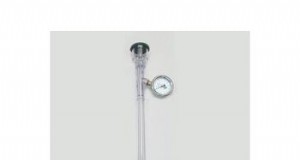
Eijkelkamp - Model 14.04.04 - Jet-Fill Tensiometers
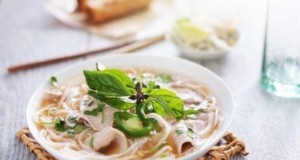
Queenette Thai Basil:informatie over basilicum 'Queenette'-planten
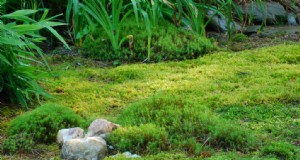
Hoe mos te kweken?
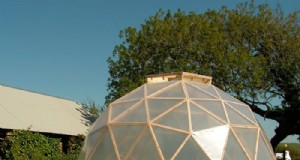
Een prachtig efficiënte doe-het-zelf-koepelkas
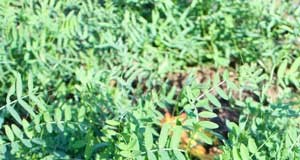
Gids voor het kweken van harige wikke
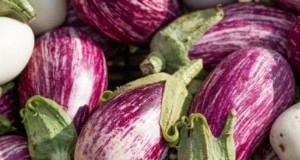
Calliope Aubergine Info:Tips voor het kweken van Calliope Aubergines
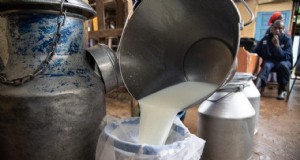
Coöperaties krijgen nog steeds weinig melk door Covid-19 pandemie
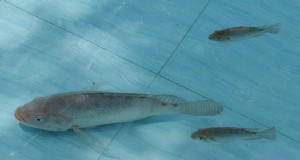
Kunnen Tilapia en Bass samenleven?
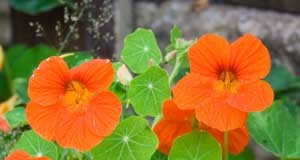
Nasturtium kweekgids
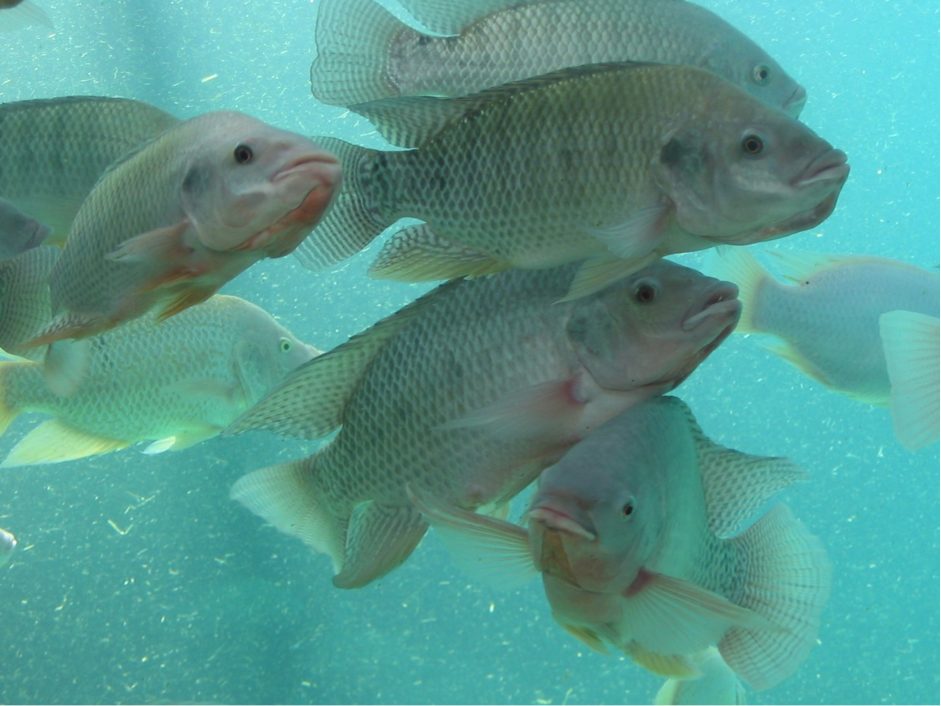
Fytogenen – Een duurzame en milieuvriendelijke oplossing voor het uitvoeren van aquacultuur